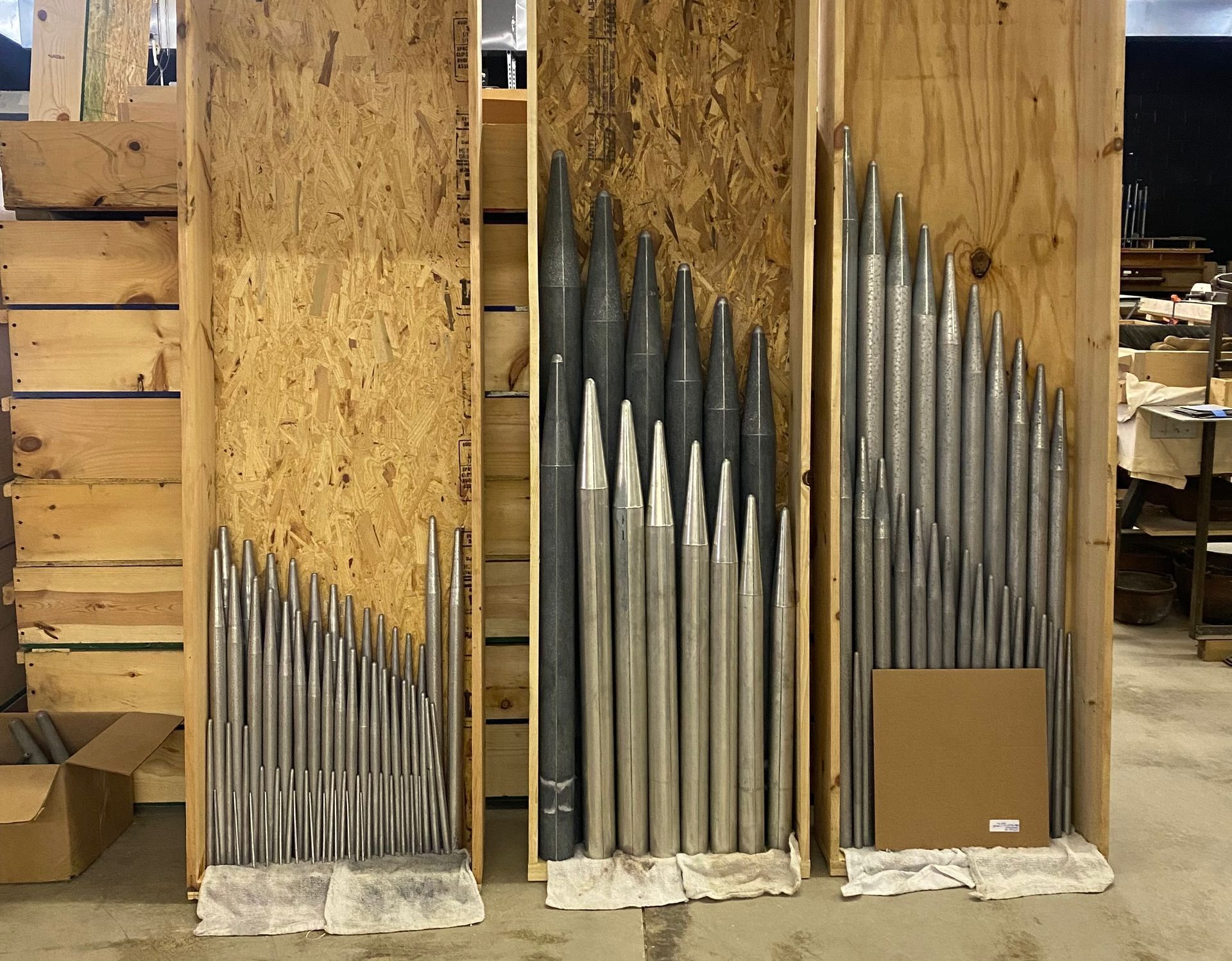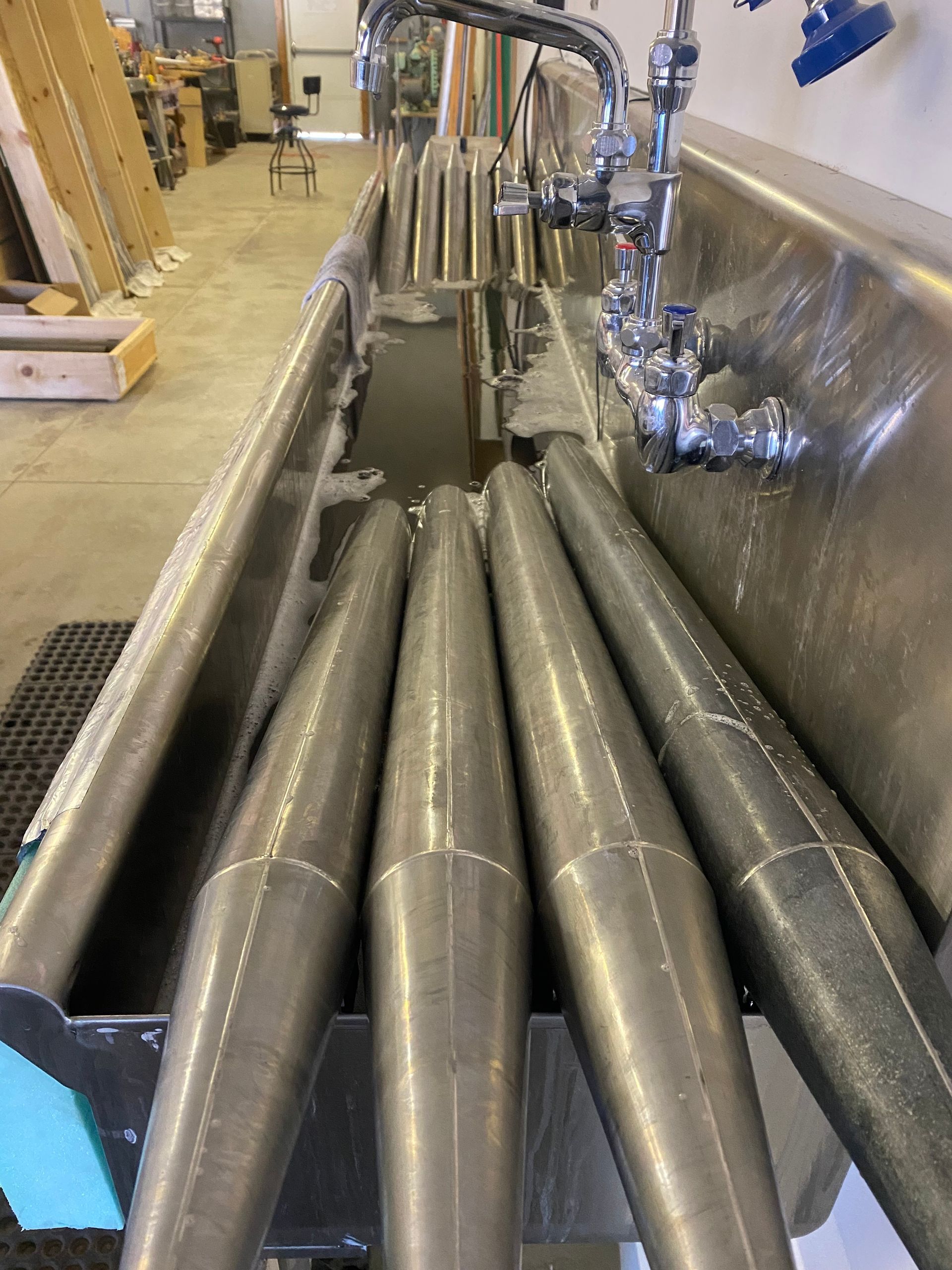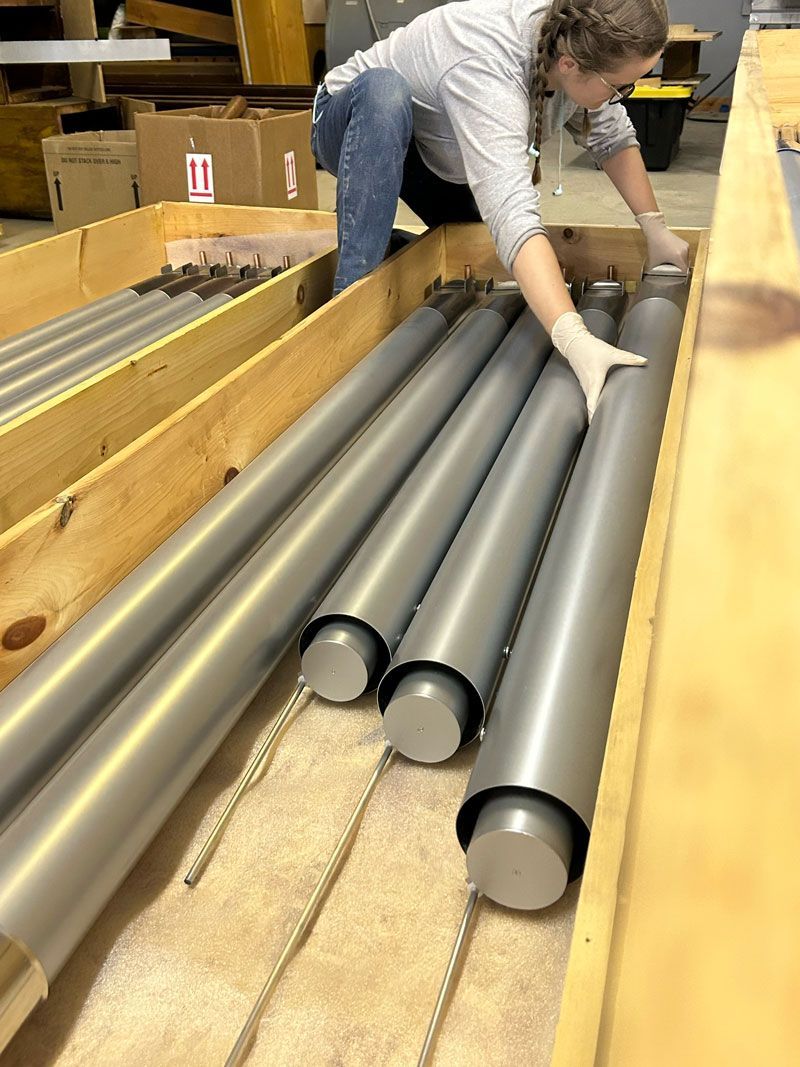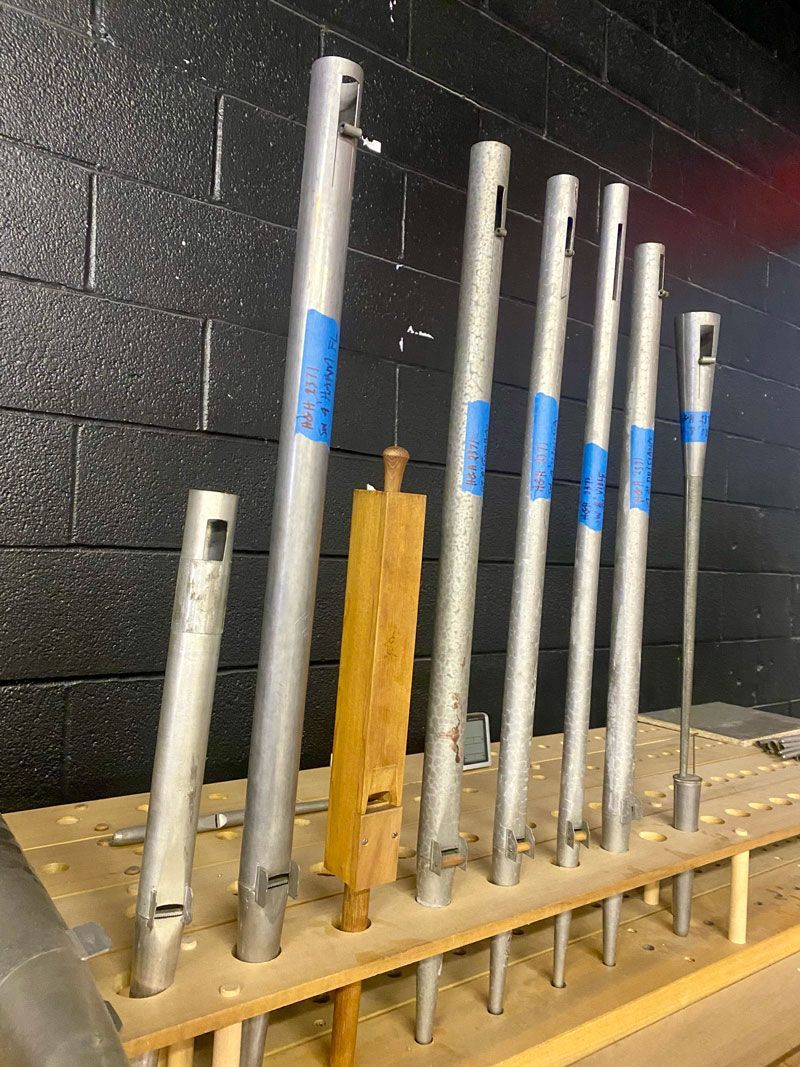Voicing & Revoicing.
Developing and enhancing the tonal qualities of new and existing instruments. Thoughtful voicing involves shaping
emotionally-rich sounds by adjusting organ pipes using specialized tools. Our expert team skillfully balances
tonal elements and historical context, ensuring superior, cohesive sound in both new and existing instruments.

Freshly washed pipework, drying and awaiting final restoration.
Voicing.
In the world of organs, voicing is the act of modifying the qualities of a sound by manipulating the physical properties of an organ pipe. The qualities we can modify for a given pipe include amplitude (louder or softer), timbre or color (brighter, darker, rounder, changing the vowel - as if one were singing), and onset of speech (faster or slower, allowing the windsheet to move inside/outside the pipe in the first moment it’s played).
These infinitesimal changes to the pipe allow listeners to experience sounds that portray an emotion or feeling. It might be pleasant, such as comfort, happiness, or solace. It might equally be something rather darker, like uncertainty, intensity, or the unknown. Often, organs sound like the people who voiced them - just as the emotional state of an artist can be palpable in a work of visual art, the sum of the craftspeople and voicers can be felt and heard in a completed instrument.



